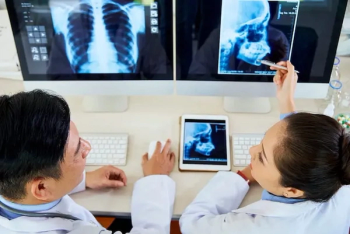
Imaging Estrogen-Related Enzyme Could Predict Obesity Struggles
PET/CT brain scans of the enzyme aromatase could help providers pinpoint which patients will struggle with obesity and self-regulation.
PET scans can be a crystal ball, helping providers predict whether men and women will struggle with obesity and poor self-regulation.
These images of the amygdala shed light on the relationship between aromatase, an enzyme associated with the production and processing of estrogen, and higher body mass index (BMI) and diminished self-control. A team of investigators from Stony Brook University shared their discovery in an article published on Aug. 31 in
According to their analysis, the team’s findings indicate that imaging aromatase in the brain could be a unique way to characterize the role estrogen plays in obesity and other conditions where self-regulation can be impaired.
To test how estrogen influences body weight and stimuli-induced behavior, the researchers, led by Anat Beigon, Ph.D. professor of radiology and Director of the Center on Gender, Hormones, and Health at Stonybrook’s Renaissance School of Medicine, used an aromatase-specific radiotracer with PET imaging to measure levels of the enzyme in the brains of 43 men and women. Participants were in the healthy to obese weight ranges. Their average age was 40 years, and their average BMI was 28.
“This is the first study to show a direct correlation between aromatase availability in the amygdala and BMI,” Beigon said. “It is also the first to how an inverse correlation between amygdala aromatase and self-control in the same individuals.”
Based on their regression model analysis that controlled for both sex and age, she said, amygdala aromatase affected men and women similarly. Consequently, it has the potential to be a sex neutral contributor to BMI, making it a possible measurable marker for both men and women who struggle with obesity and self-regulation.
Further work is needed to fully understand the role of estrogen, however, she said. The next step is to examine other brain regions where estrogen is shown to influence appetite and energy use. These investigations could determine how valuable aromatase measurements are in discriminating between binge eating and healthy populations, as well as predicting whether a patient will regain wait after bariatric surgery.
Newsletter
Stay at the forefront of radiology with the Diagnostic Imaging newsletter, delivering the latest news, clinical insights, and imaging advancements for today’s radiologists.




